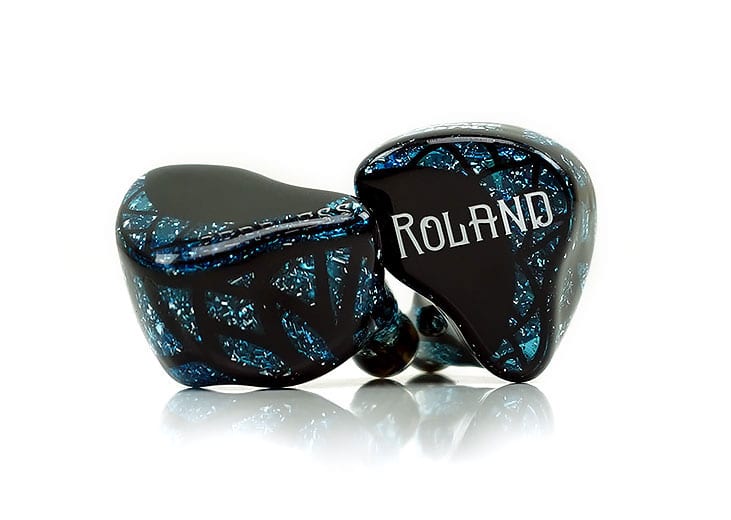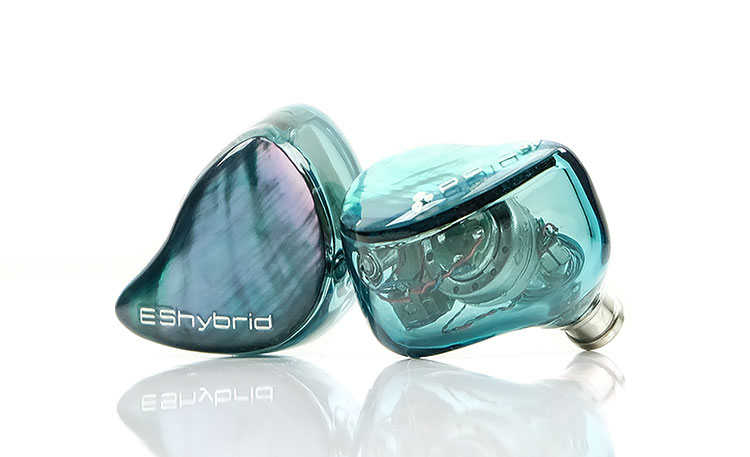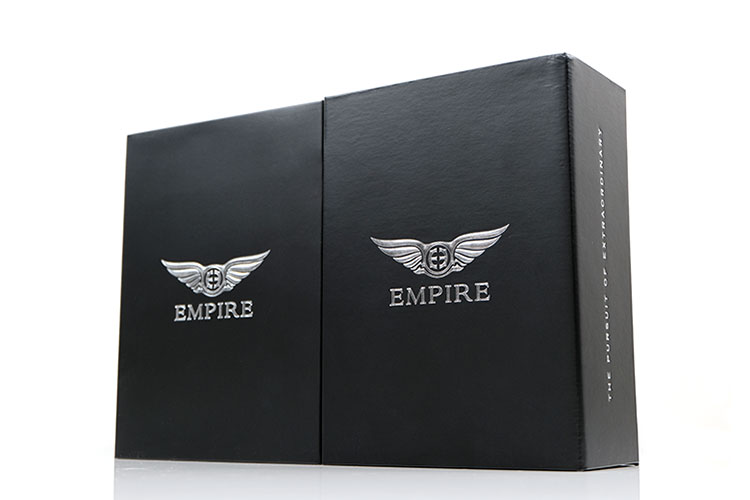Synergy
Efficiency & Noise
The Valkyrie is lower in resistance than their 4Ω Wraith at just 3Ω. This is the lowest resistance monitor I have reviewed to date, period. This is not the kind of monitor you want to stick into any output port with an impedance higher than 2-3Ω or else it will skew.
DAPs such as the HiBy R6 and the Shanling M2s are out. The SPL is way down to 96dB and far less sensitive than the Wraith’s 117dB SPL. The rating has to be one of the most inefficient for an electrostatic hybrid outside of the Jomo Trinity at 96dB SPL.
To be honest, this type of rating is not surprising for an electrostatic hybrid monitor. I am told that is due to the difficulty in driving the Sonion drivers. Before you say lack of a dynamic driver, let me point you to the similar BA/e-stat combo, the Wavaya Octa which is 100dB SPL and it also has a quad-electrostatic array and no dynamic driver.
Synergy
Genres
Synergy cuts two ways with the Valkyrie for me. The genre and the source. This is a tuning that really embraces modern pop, EDM, and my personal collection of synthwave. Anything sparse in the mix with a female vocal is perfect fodder for the Valkyrie.
If your music needs plenty of low and high and not so much mids presence then again, this is where the genre synergy will work best for me. I struggled with the likes of Within Temptation but adored how the Toxic Avenger Globe albums sounded with the Valkyrie, regardless of source. Anything that tickles the low-end of the Valkyrie is going to sound pretty good.
Sources
As for the source, I went with DAPs with good power, a neutral or tweakable sound signatures such as the Lotoo PAW Gold Touch or iBasso’s Dx220 with AMP8 with their excellent PMEQ system.
If you want you can play around with the 500Hz to 1K banding and tease out a bit more presence via PMEQ. The likes of the HiBy R3 Pro delivered a nice timbre but didn’t quite have the dynamic range and power of some of the more powerful DAPs.
You have to grab either the red or black R2R2000 from Hifiman and try it with the Valkyrie. My god, the imaging and separation from the Valkyrie jacked out of the R2R2000 black is a huge step up on the likes of the DX220.
It also injects a slightly sweeter timbre, especially the cheaper red version, and keeps the low-end supremely tight. The Lotoo PAW Gold Touch has a similar dynamic range but the sound is a shade drier than the R2R2000 and doesn’t inject quite the same openness in the mids.
Select Comparisons
Fearless Audio Roland
$958.55
Technical
The Roland is a part of a wider Paladin Series of electrostatic hybrid monitors launched this year by Fearless Audio. The configuration is also a ‘tri-brid’ like the Valkyrie, but with an additional BA for the mids and dual for the highs.
The Roland technically uses 5 drivers making consisting of a dual Sonion electrostatic top-end, 2 BA for the mids, and a single dynamic driver for the lows. However, the driver counts rarely matter once you read our tuning differences below.
Build-wise this is a universal we have here for review but you can get the Roland in customs much like the Valkyrie. The two monitors can look very striking with the dark hue green and black interlaced with flakes on the Roland and the strident fusion of pinks, purples, and red on the Valkyrie design.
Both use 2-pin 0.78mm connectors but the Valkyrie comes with a higher-end Eros II 4-wire whereas the Roland comes with a much cheaper 1.2m 8-core 152 strand single-crystal silver-plated copper wire. The core count on the Roland stock cable is higher but the better purity wire is inside the Eros II.
Performance
The Roland would be surprisingly low at 5.8Ω if it not for the Valkyrie at an even lower 3Ω rating. Driving these two IEMs will not be an issue, this is more about impedance matching and avoiding high impedance outputs.
Both have a lowish SPL with the Valkyrie dipping pretty low at 96dB and the Roland a little higher at 106dB SPL. On our test DAPs, (Lotoo PAW Gold Touch, Sony 1Z), the Valkyrie was the one that needed more current to volume match as expected.
Tuning
Tuning wise these are two vastly different monitors. The Roland is dark, warm with a decent low-end presence and rich timbre up to the mids. Beyond that its treble is quite rolled-off and lacking in headroom or air.
You get a presentation that is ‘close’ and dense rather than expansive and well separated. That being said the balance between the bass and mids is quite even and coherent in its transition.
The Valkyrie is deeper and taller but more dip in the lower mids with much more of a classic but exciting v-shaped presentation. You get a much better level of treble extension and sparkle and a heavier sub-bass reach and presence.
The mids, however, are leaner with very little warmth traveling into the mids timbre due to the lower-mids dip. You do get a little more clarity with better separation and air on the Valkyrie presentation but it is recessed in the mids with more staging emphasis on depth and height.
You might think that the Roland is thus better suited to more mids centric material and to a point yes when the tracks are simpler in structure. Vocals can sound richer and more forward.
However, even though the bass fundamental is stronger than its mids presence, the Valkyrie mids are tempered with slightly better separation. The Roland can sound too smeared for me in the mids when things get busy.
Shozy & AAW POLA39
$950
Technical
Like Roland, we will have a full review of this out in due course. Also, like the Roland and the Valkyrie, the POLA39 is an electrostatic hybrid. Unlike the Valkyrie, (and Roland), it only uses two types of drivers, a large 10mm dynamic driver, and a dual electrostatic driver. The Valkyrie throws in a BA to work the mids so you get a different fusion of timbre.
You can also get this in custom or universal and I do love the custom universal design. This is a turquoise/pale green acrylic hollow body 3-piece build consisting of the translucent main shell, Mother of Pearl faceplate, and a stainless-steel nozzle. It is more dazzling than the black of the universal Valkyrie but a wonderful contrast to the Galaxy purple of the custom Valkyrie.
Both have excellent but different performance cables. The POLA39 comes with a 48″ Symphonym Tiburon UP-OCC Copper Cable Litz 4-wire cross-braided in a very supple translucent PVC jacket and the Valkyrie has its Eros II 26AWG UPOCC Litz copper/UPOCC silver hybrid.
The Tiburon is a little heavier, more elaborate but also has a smoother tone. The Eros II has more treble energy and is lighter physically.
Performance
The POLA39 is rated at 12Ω and 101dB and compared to the 3Ω and 94dB of the Valkyrie it should be just as easy to drive (the difference is not as big as you think for ohms) but less susceptible to impedance skew. The POLA39 should also be more efficient on paper at 101dB.
However, in our real-world testing, the POLA39 was the harder of the two to drive, at least for current with a few more volume steps on both the Sony 1Z and Lotoo PAW Gold Touch. You are talking around 85-90 low-gain unbalanced on the Lotoo PAW Gold Touch compared to 75-80 on the Valkyrie.
Tuning
The POLA39 definitely has a more pushed treble presence compared to the Valkyrie and sounds the brighter of the two electrostatic hybrids.
However, the POLA39 can sound a tad brittle or thin in its percussion compared to the more liquid yet still energetic treble of the Valkyrie. It tends to tip the mids harmonic balance too much in favor of a brighter overtone and places the upper mids and lower treble into sharper focus. Percussion in that region dominates but can also sound a little splashy when busy.
On the flip side, the mids are more forward sounding than the Valkyrie and vocals are more front and center with better presence. The Valkyrie actually has a bit more body in its vocal timbre, especially female vocals, and doesn’t suffer from that bright percussion timbre the POLA39 can deliver when the upper mids get busy.
Bass is more neutral on the POLA39, but then again Weapon IX will make most things sound neutral. The tuning on the POLA39 is more balanced from the bass to the mids. It is still a classic dynamic driver timbre with a longish decay but it is not overly elevated with less of a lower-mids dip.
The Valkyrie turns it up a notch with far more sub-bass presence and a stronger fundamental. It sounds more forward as a result whereas the POLA39 can sound grand but quite ‘stand-offish’.
Empire Ears Phantom
$1499
Technical
The Phantom was part of a wave of high-end monitors launched by Empire Ears in 2018 and before the electrostatic craze took off. This is an all-balanced armature design with 5 drivers and part of their EP Series which also includes the Wraith. The Valkyrie is positioned in the X Series alongside the Legend X. Note, the Legend X was launched at the same time as the Phantom.
The Phantom does share some innovative technology you can also find inside the Valkyrie. That includes A.R.C and the synX Crossover Network design. Like the Valkyrie, you can buy the Phantom in both universal and custom format and it is a shade cheaper starting from $1499.
Both customs designs are excellent but I found the Phantom to be a shade large than the Valkyrie and the horn nozzle is more pressure-inducing also. The Valkyrie does not use a horn nozzle and it a little more comfort and flush on the ear. However, it does not seal as well as the Phantom. The venting for the dynamic driver on the Valkyrie is the main culprit here.
The cable on the Phantom is also on the lower-end though still very good with the uses of an Ares II 26AWG 4-wire multi-size UPOCC Litz copper strand cable with UltraFlexi jacketing. The Eros II is also 26AWG but it is a higher grade UPOCC Litz copper/UPOCC silver hybrid with a lighter barrel finish. It just handles a shade better for me.
Performance
The lack of Sonion electrostatic tweeters, heck even dynamic drivers, makes the Phantom much more sensitive than the Valkyrie. The Phantom is rated at 10Ω and 117dB sensitivity compared to just 3Ω but 94dB SPL.
The driving here is clearly not the issue unless you are using a HiBy R6 MK1, rather the SPL. The Phantom gets louder faster and more sensitive to current and high noise floors than the Valkyrie.
Tuning
I remember listening to the Phantom and the Legend X in March 2018 in Singapore and I felt the Phantom was a real organic and natural-sounding complement to the power and sparkle of the Legend X. In some ways, the Valkyrie and the Phantom offer a similar contrast.
The Phantom offers more of a low-end BA timbre but it is one of the better ones with a rich, voluptuous full-bodied timbre with decent power and warmth at the same time. The Valkyrie is about pure power, sub-bass bias, and a real dynamic driver level of decay and timbre.
I honestly cannot think why anyone would hesitate over which one to get. The bass response on the Valkyrie is going to decide it for you. If you like a weighty and warmer lower-mids instrumental timbre get the Phantom. If you like your low-end to be more beats driven and not so much about mids presence beyond then the Valkyrie will deliver the goods.
Even cruder, you like your Led Zep or your Funkadelic? Or your synth-wave over your hard rock maybe? The former goes to the Valkyrie the latter to the Phantom.
Vocals are much stronger on the Phantom. They are not crazy forward but the Phantom mids do sound more open and have more of a center stage presence.
The Valkyrie dips them right down and in turn, delivers more upper mids and lower-treble presence. It needs to do that to perfect the treble/bass contrast for that classic V-Shape presentation. The Phantom doesn’t push as hard for me but it does elevate post 5k for headroom.
Our Verdict
I rate gear highly that achieves what they set out to do rather than ranging it against some imaginary personal preference FR chart. I cannot know who reads our reviews but I can take an educated guess. That probably includes bassheads as well audiophile purists. We cater to both.
Today, we are speaking to the bassheads. So, when I say the Valkyrie is a riot, a first-class monitor, and just a joy to listen to if you need that strong dynamic driver-driven bass response then you are the target market. For everyone else, go buy a Phantom or something similar.
And yet, it is not without its audiophile credentials. Technical capability is still very important. Those Valkyrie electrostatic drivers deliver a really nicely balanced treble tuning with clarity and body in equal measure. This is one of the more confident top-end hybrid performances from the ‘fad of 2019’. The excellent headroom avoids what could have been a dark-sounding tuning.
If we had a bassheads medal this year I would probably award it to the Valkyrie and throw in a gold-plated 15″ sub-woofer trapped in a sub-compact just for good measure.
Empire Ears Valkyrie Specifications
- 3 Proprietary Drivers, Tribrid Design
- 1 W9 Subwoofer, 1 Mid, 1 EST High
- EIVEC – Empire Intelligent Variable Electrostatic Control
- 4-Way synX Crossover System
- A.R.C. Resonance Mitigation Technology
- Impedance: 3 ohms @ 1kHz
- Frequency Response: 4 Hz – 100kHz
- Sensitivity: 96dB @ 1kHz, 1mW
- 26AWG UPOCC Litz Copper/UPOCC Silver Hybrid Cable, Handcrafted by Effect Audio







